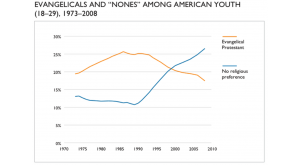Grace is a nice idea until it happens to you. Theologian George Hunsinger writes,
Grace does not mean continuity but radical discontinuity, not reform but revolution, not violence but nonviolence, not the perfecting of virtues but the forgiveness of sins, not improvement but resurrection from the dead.
He continues,
grace is not a matter of repairing this or that human capacity, but of contradicting fallen human nature as a whole, with all its capacities or incapacities, so that it actually transcends itself despite its falleneness.
Grace, which bears the human face of Jesus, is very good news. Although, it’s not such good news for our own self-justifying projects, aspirations, goals, and our own inexhaustible desire to make meaning out of the world. Grace is violent, killing us in order to make us alive. Because this Jesus is the one through whom all things are made and through whom all things hang together (Col. 1), his grace penetrates this fallen world, often in unexpected ways. Art can be one of those unexpected ways. And so it can ruffle a lot feathers, as we have seen in the paintings of Velázquez, about which I wrote last week.
As much as we like to claim otherwise, we prefer to take our art without grace. It’s easier to understand and control, easier to interpret and explain, and we can use it as a tool to further of our projects, like teaching morality and shaping the virtues; as tools for various social or political agendas; or just to decorate our living room or give us something to do on a Sunday afternoon. But art that is grace-full contradicts our plans, leaving us defenseless, vulnerable, and ultimately passive. We must simply receive it, experience it. Or we have to destroy it. The poet Osip Mandelshtam once said that the Russians take their poets seriously, they kill them. And he should know, because he was killed by them in 1938, having written a poem in which he laughed at Stalin. The poet Joseph Brodsky called it a one-line death sentence. The violence of grace in art often arrives (and kills) with joy—a smile, a laugh—that seems to undo the curse of toil and sweat and pain that plagues our work east of Eden.
Perhaps the classic cinematic representation of a violent response to the presence of grace in art is in the critcally-acclaimed film, Amadeus (1984), a highly fictionalized account of the Italian court musician and devout Roman Catholic Salieri and the impish, impious Mozart, very loosely based on Alexander Pushkin’s fictional dramatic study of the sin of envy in Mozart and Salieri (1831). In reality, Antonio Salieri (1750-1825), Italian Director of Italian Opera at the Hapsburg Court in Vienna 1774-92, was crucial to the development of eighteenth-century opera and trained such masters as Schubert, Beethoven, and Liszt, and was in fact helpful to Mozart and his family. Given his considerable talent and palpable influence on the history of opera, I can only imagine that the historical Salieri’s response to graceful music was more positive than F. Murray Abraham’s brilliant portrayal.
I’ve included a clip from the movie, the moment that Salieri, whose musical brilliance and piety allows him to “hear” the divine grace in Mozart’s music, but his graceless heart is unable to accept it, unable to accept the gracefulness of the music and hilarity and joy that flows from the undeserving vessel, threatening to overturn the forensic order of the world. And because he has been killed by the sound of this music, he vows to destroy its joyful maker.












